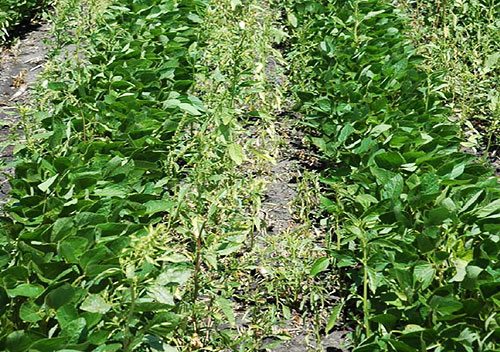by Chuck Foresman

Industry personnel and weed scientists must focus on specific issues of resistance and avoid speaking in broad, general statements. Glyphosate weed resistance is worth special attention because it is such an outstanding technology broadly deployed by the American grower. Marketing entities of each company should consider specific weed control needs of growers and make specific, agronomically sound weed control recommendations for each product. Researchers may agree quickly about needed changes in product recommendations, but they need to work together with industry to come up with solutions to manage glyphosate resistance issues. Glyphosate-resistant Palmer amaranth is an extremely serious issue to which we must apply all available technologies and work together.
The occurrence of multiple resistance in a species or in a field of different species makes weed management decisions difficult. A biotype of waterhemp from Illinois has been confirmed resistant to ALS, glyphosate, and PPO herbicides, so stacked resistance is occurring. In narrow-row crops, e.g., soybean, cultivation is not possible, so different types of weed management will be needed in different situations. Public scientists need to unambiguously communicate the facts about resistance to industry and producers, so we will all be working from the same knowledge base.
What does the future hold? Presently 18 states have 8 weeds resistant to glyphosate. However, glyphosate use will continue to be widely used because over 200 million acres are treated annually with glyphosate-based herbicides. The resistance problem is sure to grow, perhaps at a rate of one weed per year. Producers need to adopt a proactive approach to resistance instead of using a technology until it fails and then trying something else. A management solutions program for planning will soon be available at ‘resistancefighters.com.’









